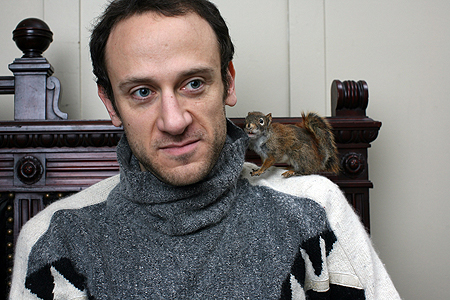
Some weeks ago, Manhattan saw the arrival of Hypnotic Show, one of Raimundas Malasauskas’ latest curatorial projects and certainly one of his most mesmerizing. The inaugural Hypnotic Show took place last year at Silverman Gallery in San Francisco. I experienced its second iteration, which took place at Artists Space in New York.
Technically speaking, there are differences between mesmerizing and the practice of hypnotizing. But in today’s vernacular these terms are used inter-changeably. The first term derives from the name of Dr. Franz Anton Mesmer (1734-1815), who is known as a predecessor of hypnotism. Working primarily in Paris, his used magnets for curing, and his trance, which is referred since as mesmerism, were based on some kind of universal magnetic fluid that, according to him, existed between people and was bound to gravity. This idea was highly debated during his lifetime.
By the nineteenth century, when the word hypnosis became current, the medical study of trance shifted to a study in psychology and away from physics. Hypnosis was used to study a patient’s physical and mental response while asleep. Some of the more successful experiments of deep trance are attributed to the late work of Dr. Jean-Martin Charcot (1825-1893) in his research of neurosis and hysteria. After some period of questioning and debunking, it was in the twentieth century, particularly after World War II, that hypnosis was again embraced by the medical community, not surprisingly, by military doctors.
While there were many other practicioners of mesmerism, hypnosis and other forms of trance, it was Mesmer and Charcot’s peculiar medical practices that the popular image of the hypnotic séance is modeled from. The showmanship around hypnosis, however, has increasingly grown since Mesmer’s times. It is the dependence, the interest-filled and willing submission, really, of the patient to the hypnotizer that is raised to the level of awe or spectacle.
For Hypnotic Show, Raimundas commissioned several artists to create immaterial artworks to be tangibly experienced under hypnosis. While only a couple of contributions are drawings or images, the main submissions are succinctly drafted text pieces. These are descriptive texts detailing encounters with phenomena and art, written as instructive walks or detailed travels. The hypnotized wanderer enters in and out of scenes, encountering images, objects, and situations of different kinds. Like in dream state, many times these encounters suggest the hypnotized to define or name things, even on occasions to take authorship of certain artworks or moments that they come across.
This is how you begin to experience Deric Carner’s artwork: You are walking down a path. You are watching where you place your feet. There are loose rocks. You are surrounded by vegetation. It’s dark and dusty. The work continues until you recognize an object that is mysteriously rising from the horizon but that is, you think, quite clearly not the sun. The hypnotizer then transitions to another work, the contribution by Will Holder. This time you encounter an image of Elvis Presley. A poster that becomes three-dimensional. You find yourself interacting with Elvis.
These are only two of more than a dozen artworks commissioned by Raimundas, who hands the exhibition as script to a professional hypnotizer, Marcos Lutyens. To experience the exhibition, then, the public convenes at a gallery for the séance. In the backdrop, a video by Patrizio di Massimo rendered a seal in fade-ins and close-ups. In the foreground, the curator and hypnotizer lead the event. At Artists Space, there were about ten people who volunteered for hypnosis; they were in fact audience of the exhibition. The rest of us there, the majority, were merely spectators bearing witness to their experience. And while not in a state of trance, at least imagining what it could feel to be in that place.
In the press release—a document written as a responded list of Frequently Asked Questions—the curator described this unconventional and allegedly immaterial exhibition as “a temporary social structure for engaging into creative cognitive acts through shared practices of art and hypnosis.” At the end of the séance at Artists Space, Raimundas explained that he sought to place an exhibition in the brain. The weight given to physical site is interesting. It opened a discussion that is less about memory or imagination, than about sense and sensibility, or as he suggested, of neurology.




